Inside OSCA book review: New view of Maserati brothers’ sports car firm
Images from a society photographer capture a small Italian maker from an alternative angle. Beautiful images, beautiful cars...
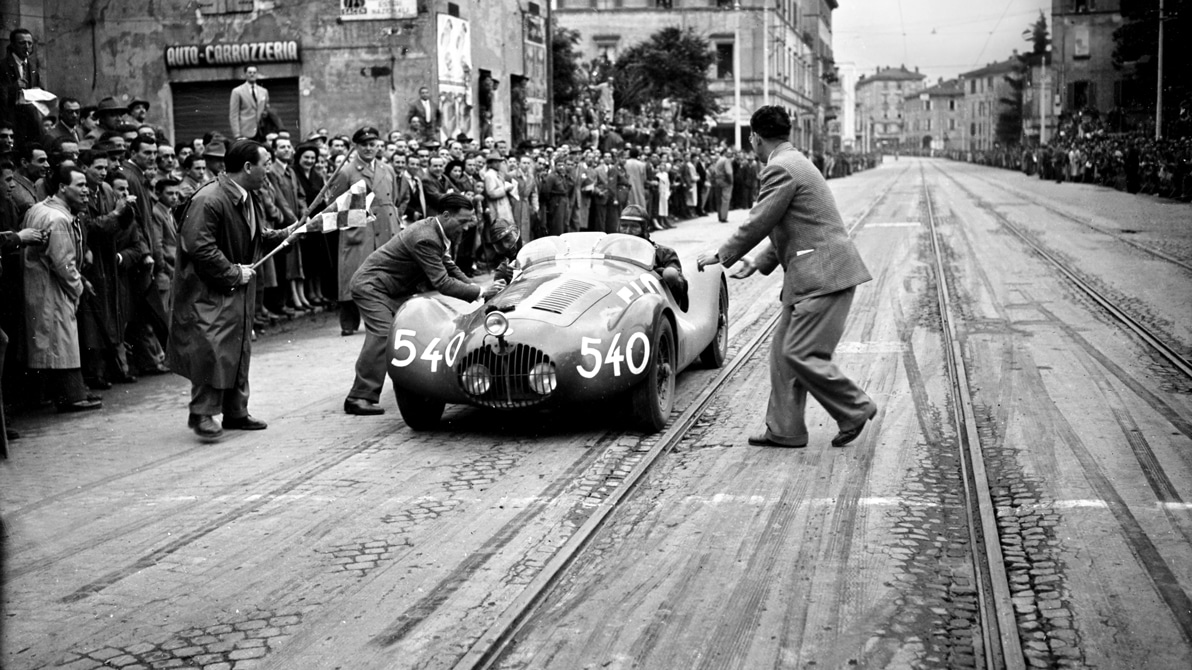
Breveglieri captures Mille Miglia fervour as Fagioli stops his 1100 OSCA at a control in the 1950 race
ALAMY
Not a history of OSCA per se, this hangs on the stills of Walter Breveglieri, a fashion and society photographer who also loved motor racing and became friends with the Maserati brothers, who had founded OSCA after splitting from the Maserati company. Of course there’s a rundown of the firm’s 20 years but it majors on the photos and recollections of people involved in producing these little jewels.
Living nearby, Breveglieri often dropped in at the workshops and so offers us not just racing shots but casual moments – Prince Bira climbing into an OSCA for a quick test, Juan Manuel Fangio reading a car mag, or the youthful Rodríguez brothers arriving to test the OSCA they’d share at Le Mans in 1959.
Between the photos are memories of employees and drivers, with some intriguing insights, one telling of Bindo Maserati’s volatile temper, Alejandro de Tomaso pouring petrol on a policeman to make him move, and Fangio being scared of turbulence on an aeroplane.
Another mechanic recalls Fangio buying a clever valve grinder in order to copy it and make it in Argentina – he had a good nose for business, if not copyright law. He too has a de Tomaso story: he apparently regularly cheated his own wealthy wife out of expenses. He’s described as “genius, sorcerer, scoundrel”.
Interviewed before their deaths, OSCA drivers Maria Teresa de Filippis and Stirling Moss add their views: of his 1954 Sebring victory in one of the Bolognese machines, Moss says, “I’ve no idea how it was possible! The OSCA was one of the nicest cars I raced.”
You couldn’t say that Breveglieri is the world’s best race photographer but he is skilled at capturing the static – he has an ability to make workshop images rather beautiful with metal components shining like jewels in the sun, and his pit shots are rich: Luigi Villoresi pulling away from a stop in the 1956 Pescara race is a beauty. A shot of packed ranks of spectators perching on a wall and up the bank behind just reeks with atmosphere.
While not a history, the numerous images and knowledgeable captions infuse a wealth of information about this little, underfunded company and its wonderfully engineered products. There are so many sports and GT cars I’d not seen before, some with striking coachwork, which might have funded the racing. A shame the brothers weren’t as hard-nosed as Mr Ferrari. GC
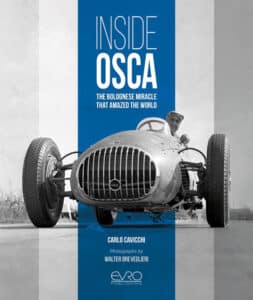
Inside OSCA
Carlo Cavicchi
Evro Publishing, £95
ISBN 9781910505915
Formula One: The legends
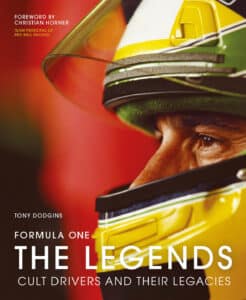
Tony Dodgins
There’s endless debate about who qualifies as an F1 legend, but adding ‘cult’ (Cult Drivers and their Legacies is the subtitle) is a harder sell – is there a cult around Alberto Ascari? Labels apart, here’s a nicely presented package of 32 career summaries, up to Max Verstappen. Channel 4 race analyst Tony Dodgins has been reporting long enough to be writing many of these pen portraits from his own encounters, so he has authority. Some wonderful pictures, with plenty of breathing space. GC
Ivy Press, £35
ISBN 9780711289499
MG Century
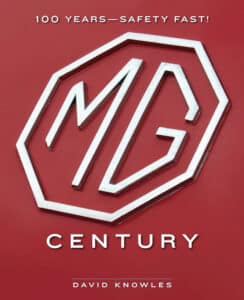
David Knowles
From its eye-grabbing contents page to the jazzy endpapers this is a visually attractive and textually informative story by a marque expert, from the garage specials on. There’s good detail on early racing machines and successes, the various EX models with Goldie Gardner and Stirling Moss, plus proposals for new models, surprisingly even in the BMW days. We run right up to the Chinese era although this section can sound like PR – which doesn’t undermine this as an excellent and attractive history. Top marks. GC
Quarto, £45
ISBN 9780760383155
The likely lads
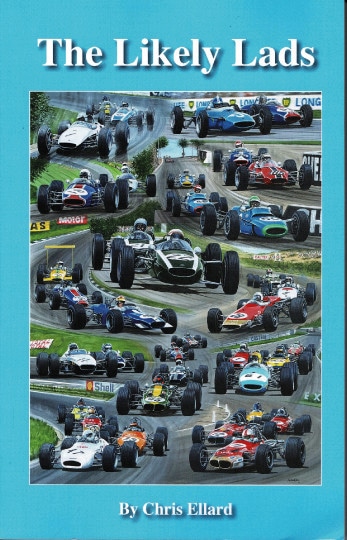
Chris Ellard
Perhaps best read on a train to Newcastle – however, you’ll find no Terry Collier or Bob Ferris here. Instead we’re on a wild ride through Formula 3 in the 1960s and ’70s. Chris Ellard is our enthusiastic guide and he’s collected tall tales and quirky quotes from those who were present. The European International F3 Challenge at Hockenheim in ’67 sounded a corker. “By degrees, Clay Regazzoni started to eliminate the bloody field,” recalls Derek Bell: cue podium scowls. Good fun. LG
W3 Publications, £22
ISBN 9781527279407
